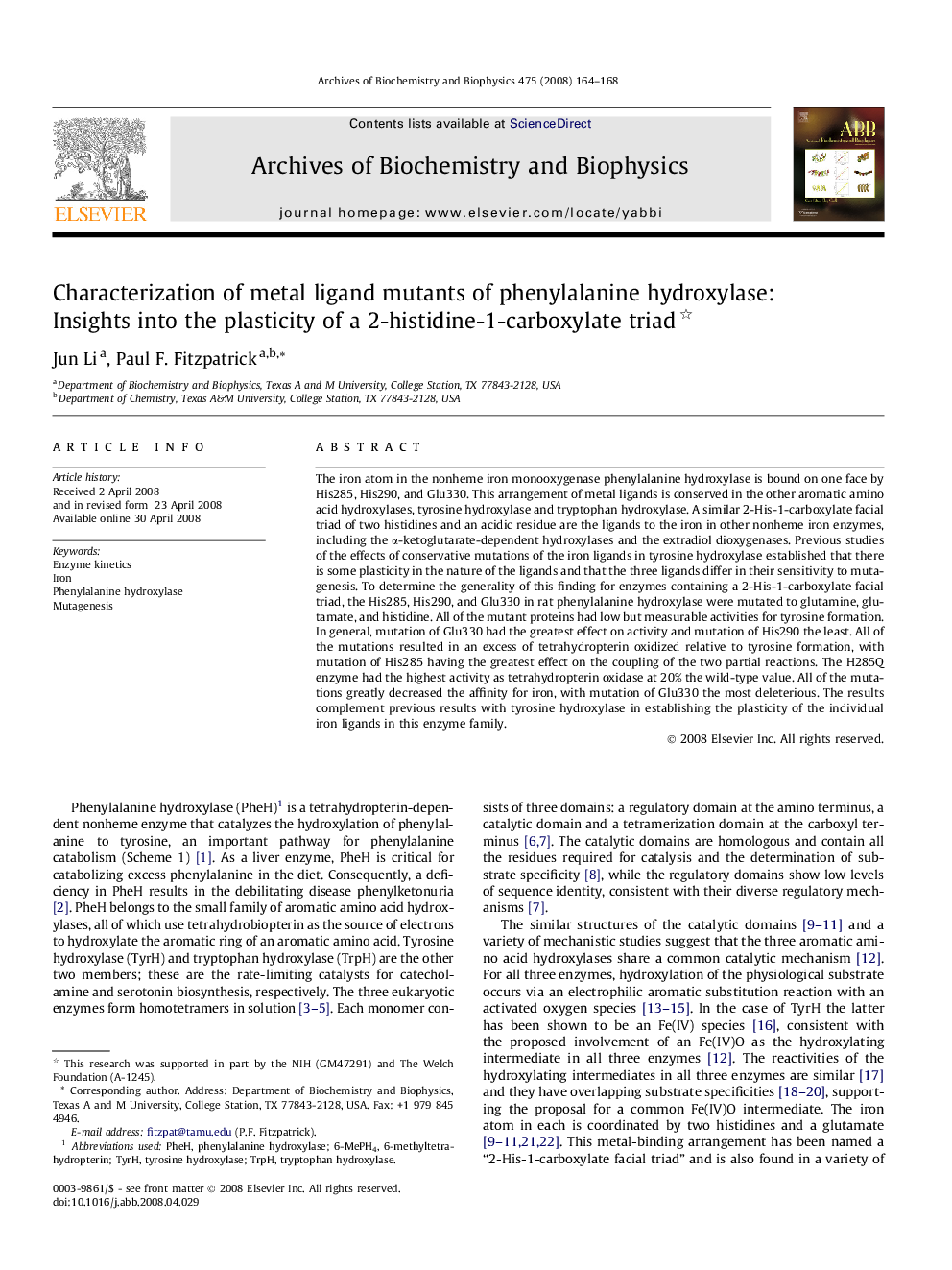| Article ID | Journal | Published Year | Pages | File Type |
|---|---|---|---|---|
| 1926724 | Archives of Biochemistry and Biophysics | 2008 | 5 Pages |
The iron atom in the nonheme iron monooxygenase phenylalanine hydroxylase is bound on one face by His285, His290, and Glu330. This arrangement of metal ligands is conserved in the other aromatic amino acid hydroxylases, tyrosine hydroxylase and tryptophan hydroxylase. A similar 2-His-1-carboxylate facial triad of two histidines and an acidic residue are the ligands to the iron in other nonheme iron enzymes, including the α-ketoglutarate-dependent hydroxylases and the extradiol dioxygenases. Previous studies of the effects of conservative mutations of the iron ligands in tyrosine hydroxylase established that there is some plasticity in the nature of the ligands and that the three ligands differ in their sensitivity to mutagenesis. To determine the generality of this finding for enzymes containing a 2-His-1-carboxylate facial triad, the His285, His290, and Glu330 in rat phenylalanine hydroxylase were mutated to glutamine, glutamate, and histidine. All of the mutant proteins had low but measurable activities for tyrosine formation. In general, mutation of Glu330 had the greatest effect on activity and mutation of His290 the least. All of the mutations resulted in an excess of tetrahydropterin oxidized relative to tyrosine formation, with mutation of His285 having the greatest effect on the coupling of the two partial reactions. The H285Q enzyme had the highest activity as tetrahydropterin oxidase at 20% the wild-type value. All of the mutations greatly decreased the affinity for iron, with mutation of Glu330 the most deleterious. The results complement previous results with tyrosine hydroxylase in establishing the plasticity of the individual iron ligands in this enzyme family.
